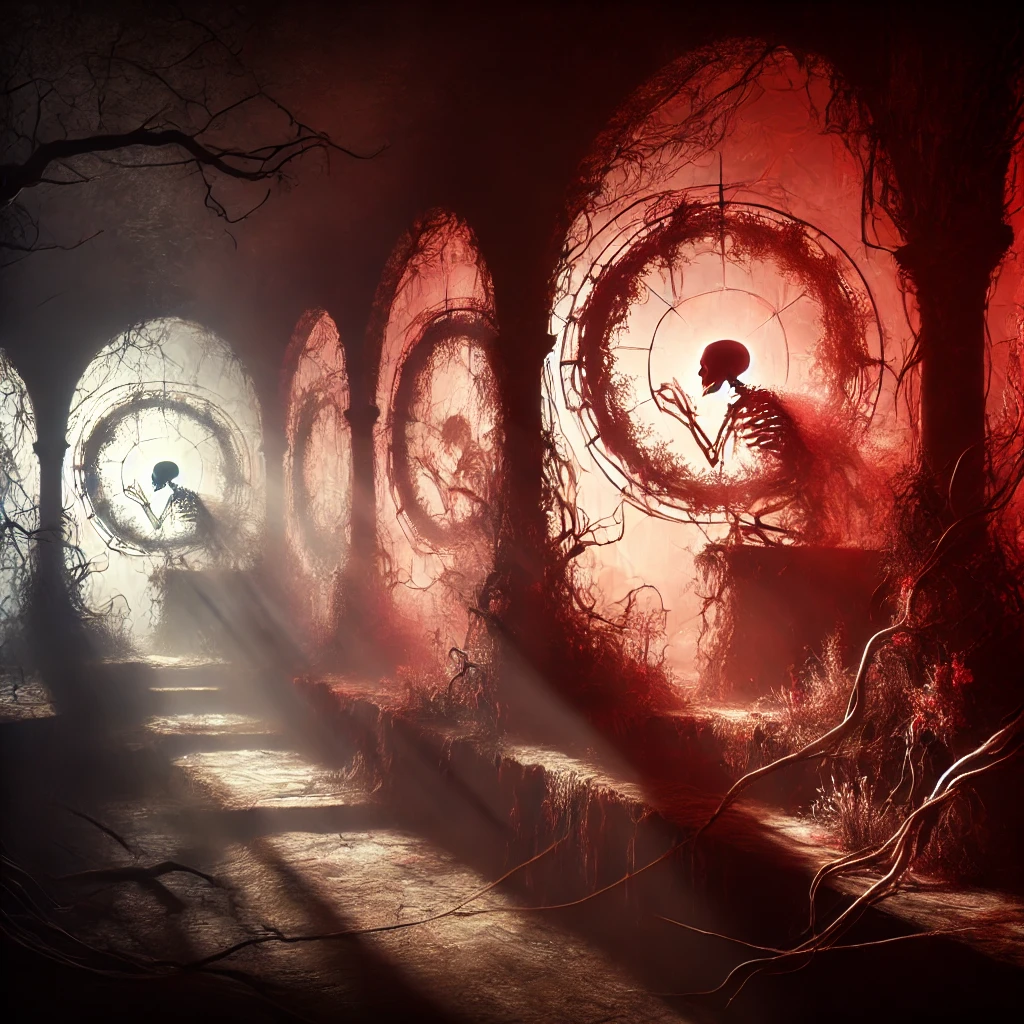Darkness holds the seed of light. Decay makes way for renewal. And the forces that strip away our illusions are the same forces that guide us home to ourselves.

The final lines of The Masque of the Red Death are haunting in their simplicity: “And Darkness and Decay and the Red Death held illimitable dominion over all.” These words linger, leaving readers with a stark image of inevitability, finality, and the inescapable nature of transformation. Yet, when we examine this conclusion through a Gnostic lens, these themes of darkness and decay take on a deeper, more transcendent meaning. They are not merely the end, but a doorway to something greater.
Darkness as a Space of Becoming
Darkness is often feared, seen as the absence of light or as a space of destruction. Yet, from a spiritual perspective, darkness is not the enemy of light but its partner. It is the womb of creation, the space where transformation begins. In the story, the Red Death brings darkness, not as a punishment, but as an agent of change. It strips away the illusions of the masqueraders, dissolving the barriers they built to protect themselves, and reveals the truth of their existence.
From my perspective, darkness invites us to surrender—to let go of what no longer serves and to allow new possibilities to emerge. It is in the darkness that we find the potential for growth, renewal, and realization. Just as the Red Death holds dominion over the masquerade, so too does the shadow hold dominion over the parts of ourselves we have not yet faced. To embrace darkness is to embrace the fullness of life, including its mysteries, its challenges, and its gifts.
Decay as a Path to Renewal
The theme of decay in the story symbolizes the dissolution of the old to make way for the new. The revelers’ attempts to avoid the Red Death mirror humanity’s resistance to change, yet decay is a natural and necessary part of the cycle of life. In Gnostic terms, decay can be seen as the shedding of false identities, beliefs, and structures that no longer align with our truth. It is through this process that we come to know ourselves more fully.
The imagery of decay in Poe’s tale is not a symbol of defeat but of transformation. The collapse of Prospero’s fortress and the end of the masquerade are not merely a conclusion but an initiation into something deeper. Just as the leaves fall in autumn to nourish the earth, so too does the dissolution of the old make way for new growth. Decay, when allowed, becomes a path to renewal.
The Dominion of the Red Death
The phrase “illimitable dominion” suggests totality, an all-encompassing presence. Yet, this dominion is not one of control or tyranny but of natural law. The Red Death’s presence reminds us that no matter how much we try to resist or deny, the cycles of life, death, and rebirth will continue. This is not a punishment but a grace, a reminder that transformation is inevitable and that nothing is truly lost—only transformed.
From a spiritual perspective, the dominion of the Red Death is a call to surrender to the flow of life. It is an invitation to trust the process, even when it feels uncertain or uncomfortable. In the journey of awakening, we come to see that the forces we once feared are, in fact, guiding us toward our highest potential. The Red Death, like the Dragon in awakening, clears away what no longer serves, making space for the emergence of our truest selves.
Reflection: Embracing the Cycles of Life
The conclusion of The Masque of the Red Death invites us to reflect on our own relationship with darkness, decay, and transformation. How do we respond to the cycles of life and death within us and around us? Do we resist, clinging to the familiar, or do we surrender, allowing the process to unfold?
As we consider the dominion of the Red Death, let us remember that transformation is not something to fear but to embrace. Darkness holds the seed of light. Decay makes way for renewal. And the forces that strip away our illusions are the same forces that guide us home to ourselves.
The Red Death’s dominion is not the end, but the beginning of a deeper truth. In its presence, we are reminded that we are not separate from the cycles of life but part of them. To embrace these cycles is to embrace our wholeness, to step into the flow of existence, and to trust that even in darkness, the light of our being remains eternal.
You are the master you have been waiting for.
